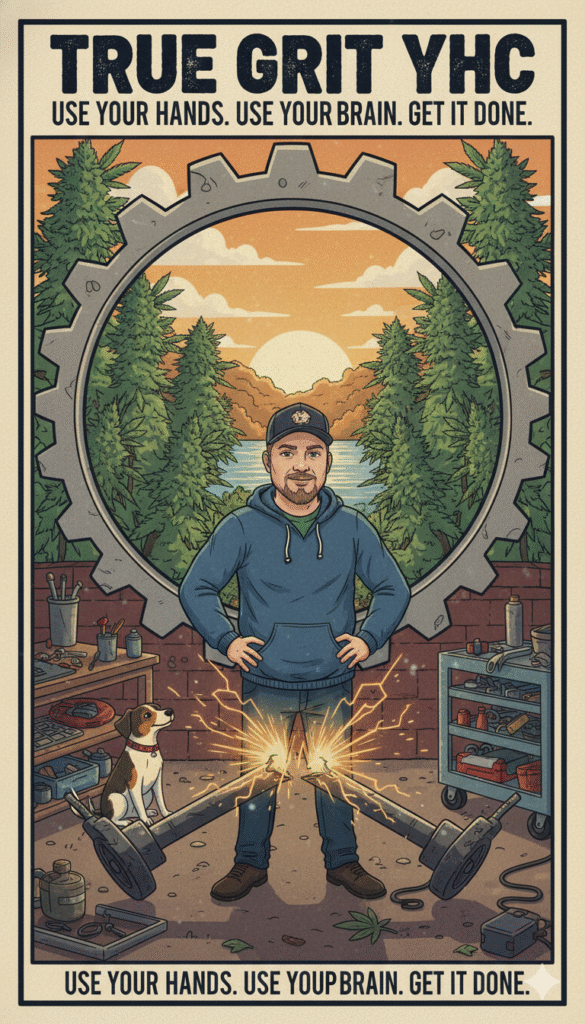Most people cope with a global pandemic by baking sourdough bread or learning a language they will never speak. I decided to fill my house with the highest-octane energy available in the canine kingdom: Rat Terriers. Looking back at the blur of the COVID years, when I was working remotely for the college and the world felt like it was on pause, the only things that were definitely not on pause were the dogs.They entered the timeline like very different comets. Rocket arrived first, around 2021, right in the thick of the work-from-home era. Rocket is a Type B Rat Terrier, also known as a Theodore Roosevelt Terrier, and he lives up to the “Teddy” name. He is built like a low-rider tank—short legs, long body, and a chest like a barrel. He operates close to the ground, a heat-seeking missile for blankets and snacks. Then came Bella in 2022, the Type A. If Rocket is a tank, Bella is a gazelle. She is square, long-legged, and elegant, standing twice as tall as Rocket. When they stand next to each other, they look like the canine version of Danny DeVito and Arnold Schwarzenegger in Twins.But supervising this chaotic circus is Flower. At thirteen years old, Flower has seen it all, and frankly, she is unimpressed by most of it. While Rocket and Bella spent the pandemic years bouncing off the walls and barking at squirrels three counties away, Flower held down the role of Senior Management. She is the grand dame of the pack, the one who watches the young ones tear around the living room with a look that clearly says, “I am too old for this nonsense, and you are all idiots.” She sleeps more now, curling up in the sunbeams that cut across the floor, but her eyes are always open just a crack, monitoring the perimeter.Living with this trio changed the texture of my life. They became my co-workers, sleeping under the desk while I navigated Zoom calls, occasionally sighing loudly when meetings ran long. But right now, the dynamic in the pack has shifted because Bella is currently defying the laws of physics. My sleek, fifteen-pound athlete has transformed into a thirty-pound vessel of life. She was knocked up on October 28th, and as we stare down the barrel of late December, she looks like she swallowed a watermelon sideways.It is jarring to see her this way. Bella is usually the jumper, the sprinter, the one who can clear a baby gate without breaking stride. Now, she waddles. She groans when she lies down. She has literally doubled her body weight. Rocket, poor guy, doesn’t know what to make of it; he tries to initiate play, doing his little low-rider bow, and Bella just growls. And Flower? Flower is watching it all go down from her favorite pillow with supreme skepticism. She knows what’s coming. She remembers what puppies are like—the noise, the sharp teeth, the lack of boundaries—and she is mentally preparing to retreat to higher ground.We are on the countdown now. The calendar says Christmas, and biology says puppies. Based on the math, we are looking at a due date right around December 25th. It feels fitting. In the middle of a Minnesota winter, with the wind screaming outside, we are waiting for new life. I’ve set up the whelping box, and Bella is nesting, digging frantically while Rocket patrols the hallway and Flower sighs from the couch. We’re ready for the Christmas miracle, even if it means I’ll be cleaning up puppy poop while Flower judges me from across the room.
Blog
-
Operation DayQuil: The Whiteout Run
The prairie doesn’t just blow wind; it screams. When you live on the edge of the great emptiness like we do in Fergus Falls, a sixty-mile-per-hour wind isn’t weather, it’s a physical assault. It hits the side of the house like a freight train made of ice, making the windows flex and the vinyl siding groan in a way that makes you question the structural integrity of everything you own. The rat terriers are smart enough to know that outside is currently a death sentence; they have burrowed so deep under the duvet that they have become lump-shaped fossils, refusing to acknowledge the apocalypse happening beyond the glass.
I should be there with them. I should be asleep. But I have a head cold that feels like someone poured quick-dry concrete into my sinuses, and I am out of the good stuff. I need the DayQuil. The orange nectar of the gods. And unfortunately, the only thing standing between me and sinus relief is three miles of whiteout conditions and a parking lot that has likely turned into a frozen demolition derby.
Going to Walmart in a blizzard is not an errand; it is a tactical deployment. I layer up like I’m preparing for a blackened ops mission in the Arctic Circle. Thermal base layer. Hoodie. The heavy Carhartt jacket that smells like two-stroke smoke and resilience. I pull on the muck boots and catch a glimpse of myself in the hallway mirror—I look like a crab fisherman prepared to die at sea, but I am just going to buy decongestants next to the dairy section.
I step out the side door and the wind immediately tries to strip the skin off my face. It’s a total whiteout. You can’t see the street. You can’t see the neighbor’s house. You can only see the swirling, hypnotic void of snow moving horizontally at highway speeds. I climb into the 2010 RAV4, my trusty steed. She starts with a groan, complaining about the negative windchill, but she turns over. Toyotas are like cockroaches; they will survive the end of the world, provided you change the oil occasionally.
I back out of the driveway by feel. I can’t see the snowbanks, but I can feel when the tires hit the resistance, bouncing me back toward the center. Driving in a whiteout is a spiritual experience. The world is gone. There is no horizon. There is no sky. There is only the five feet of illuminated snow directly in front of your bumper. The wind hits the RAV4 broadside, shoving the car two feet to the left, and I have to counter-steer, surfing the ice rather than driving on it. I’m doing fifteen miles per hour, but it feels like reentry speed. I pass other vehicles that look like ghost ships in the fog—a lifted pickup truck in the ditch with hazard lights blinking like a distress beacon, a sedan spinning its wheels in futility. I offer a silent prayer to the gods of All-Wheel Drive and keep moving.
The Walmart parking lot in a blizzard is a lawless state. The painted lines are gone, the cart corrals are buried, and civilization has broken down. People just abandon their cars wherever momentum stops them, creating a chaotic labyrinth of frozen steel. I park the RAV4 at a forty-five-degree angle near the entrance and fight the wind to open the door—it takes two hands just to push it against the gale. I stumble toward the automatic doors like a survivor in a disaster movie reaching sanctuary.
The doors slide open, and the wind howls one last time before being cut off by the hum of fluorescent lights and the smell of popcorn chicken and wet floor mats. Inside, it’s a different world. It’s bright. It’s dry. And it is filled with the other brave souls of Fergus Falls who risked their lives for essentials. We nod to each other—the universal “Midwest Nod.” It says: You out in this? Yeah, out in this. Good luck.
I navigate to the pharmacy aisle. It’s been raided, a victim of the pre-storm panic buying, but there, in the back, sitting like the Holy Grail, is the twin-pack: DayQuil and NyQuil. The Alpha and the Omega. The waker and the sleeper. I grab it and clutch it to my chest like a prize. The checkout is fast because nobody wants to chat; the cashier looks tired, and when she asks if I have a rewards card, I tell her my reward is making it home alive. She doesn’t laugh, but I think I see a glimmer of understanding.
I brace myself at the exit, zipping the Carhartt to the chin and pulling the hood tight. The doors open, and the prairie screams again. The walk back to the RAV4 is a battle against gravity, the wind trying to knock me over with every step, the snow blinding me instantly. But I have the package. I have the cure. I throw the bag in the passenger seat, climb in, and slam the door against the storm. The silence of the cabin returns, and I wipe the ice from my eyebrows. The RAV4 roars to life for the return trip. Seven blocks to go. The dogs are waiting. The DayQuil is waiting. Let it blow. I’ve got the medicine. -

The Sepsis Summer: A Minneapolis Exorcism
MINNEAPOLIS — There is a specific kind of arrogance that only exists in an 18-year-old male with a 3.9 GPA. It is a brittle, unearned confidence, the kind that assumes the world is merely a classroom waiting to be aced.
In the late spring of 1997, I possessed this arrogance in spades. I was done with my hometown. I was done with the river valley. I was bound for the University of Minnesota in the fall, but I couldn’t wait that long. I needed the city, and I needed it immediately.
So, I packed a bag and drove north with my brother. We were going to conquer Minneapolis. We were going to live the “Uptown Life.” Instead, I found myself three months later shivering in a hospital bed, my blood poisoned, my car stolen, and my ego surgically removed.
This is the anatomy of a summer that went wrong in every way possible.
The Landing
We didn’t hit the pavement running; we hit the carpet at Aunt Patty and Uncle Larry’s house. It was the necessary purgatory between rural safety and urban chaos. For two weeks, we were on our best behavior, sleeping in guest rooms and scanning the Star Tribune classifieds, circling listings for apartments we couldn’t afford.
But the pull of Uptown was magnetic. In the late ’90s, the intersection of Lake Street and Hennepin Avenue was the cultural solar plexus of the Midwest. It was grunge’s last gasp and the pre-dawn of the hipster era. It smelled like clove cigarettes, exhaust, and expensive coffee.
My brother, older and theoretically wiser, had a lead. He knew some girls from back home who had a place. We finagled our way in. It was a classic Uptown setup: creaky hardwood floors, too many people sharing one bathroom, and an unspoken agreement that rent was a fluid concept.
I had arrived. I secured a job at Urban Outfitters on the corner of Lake and Hennepin. This was the holy grail of retail. I was selling oversized denim and ironic t-shirts to suburbanites who wanted to look like they lived the life I was actually struggling to survive. I thought I had it made.
The Blowout
The disintegration of my new life began, as many tragedies do, with a birthday.
It was my brother’s birthday. The air was thick with humidity and bad decisions. We were drinking—cheap beer, probably whatever was on sale—and the tension that had been simmering between us for weeks finally boiled over.
I don’t remember the specific catalyst. It might have been money; it might have been a girl; it might have just been two brothers trying to occupy the same alpha space in a cramped apartment. But I remember the explosion. I remember deciding, with the absolute moral certainty of a teenager, that I wasn’t going to take his garbage anymore.
I went to sleep angry. When I woke up, the apartment was quiet. Too quiet.
My keys were gone. My car was gone. And my brother was gone.
He had vanished into the city grid, taking my only means of transportation with him. I was stranded in Uptown, a kid from the river valley with no wheels and a roommate situation that was rapidly deteriorating.
The Darkout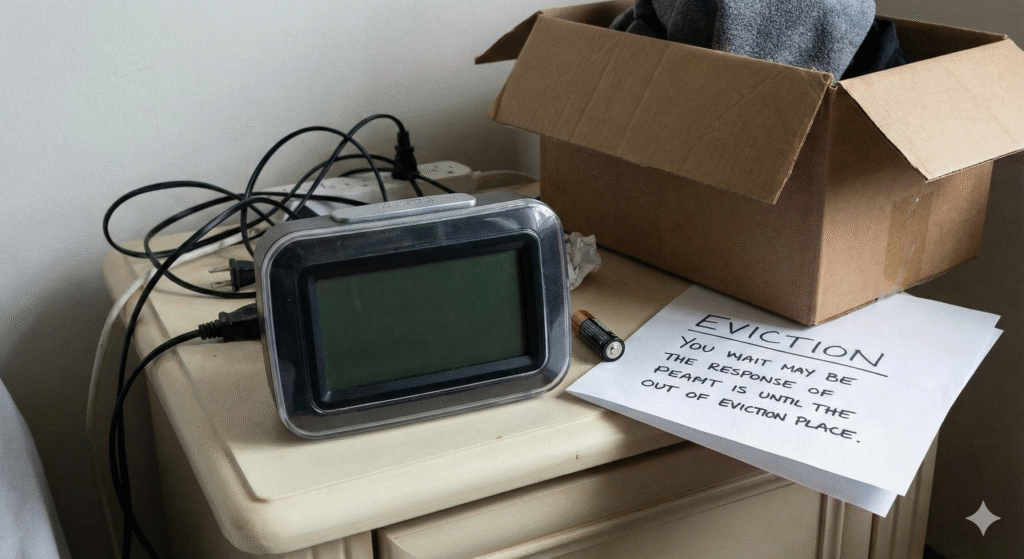
The universe, sensing blood in the water, decided to double down.
A few weeks after the exodus of my brother, the power grid on my side of the block hiccuped. It was a mundane infrastructure failure, likely a blown transformer, but for me, it was fatal.
In 1997, we didn’t have smartphones. We relied on General Electric bricks plugged into wall outlets. My alarm clock, a soldier of the analog age, lacked a battery backup. When the power died, so did my schedule.
I woke up to sunlight that was far too bright and a silence that was far too heavy. I looked at the flashing “12:00” on the clock face and felt the cold drop in my stomach. I was late for the shift at Urban Outfitters.
I called immediately, panic rising in my throat. I pleaded my case to the supervisor—the power outage, the honest mistake, the chaos of my living situation.
“Don’t bother coming in,” she said. Her voice was flat, efficient. “I’ve taken you off the schedule.”
Just like that. No probation, no second chance. The 3.9 GPA didn’t matter. The intent to go to the University of Minnesota didn’t matter. I was just another flake in a neighborhood famous for them.
The Exile
With my brother gone, the social contract holding me in the apartment dissolved. The girls, realizing I was now jobless, carless, and brotherless, asked me to leave.
I was on the streets.
I don’t mean I was “couch surfing.” I mean I was out. I was adrift in Minneapolis, a city that suddenly felt very large and very sharp. I had no income. I had no vehicle. I had pride, which meant I didn’t call home. Not yet.
And then, the infection set in.
In a bid to fit the Uptown aesthetic, I had acquired some piercings. Specifically, I had pierced my septum. It was a statement. Unfortunately, the statement my body made in return was: Reject.
Living rough means hygiene is a luxury you lose fast. I couldn’t clean the piercing properly. It started to throb. Then it started to swell. Then the heat began to radiate from my nose to my cheeks, up behind my eyes.
I didn’t know it then, but I had sepsis. The infection had breached the local tissue and entered my bloodstream. I was walking around Lake Street with a fever spiking past 102 degrees, hallucinating slightly, my face feeling like it was being crushed by a vice.
I was 18 years old, and I was dying on a sidewalk in Minneapolis because I wanted to look cool.
The Retreat
The breaking point wasn’t the hunger or the lack of a bed. It was the fear. I realized, through the haze of the fever, that I was in over my head. The “Man vs. Wild” scenario had played out, and the Wild had won.
I found a payphone. I called my parents.
I don’t remember the conversation, but I remember the tone. It was the sound of surrender.
They came. They didn’t lecture me. They didn’t say “I told you so.” They saw the state of me—shivering, pale, my face swollen—and they drove me straight to the hospital.
I spent a week there. IV antibiotics pumped into my veins to scrub the “city life” out of my blood. I lay in the sterile white bed, watching the fluid drip, thinking about the T-bones my dad would grill back home, thinking about the river, thinking about how stupid I had been to think I could conquer the world without a backup plan.
The Reset
August arrived. I healed. The septum ring was gone, the hole closed up, a small scar the only reminder of the summer.
I packed my bags again. This time, I wasn’t going to an apartment with girls and no rules. I was going to Centennial Hall at the University of Minnesota.
Moving into the dorms felt like checking into a luxury hotel. It was a tiny concrete box, yes. But it was my concrete box. And in 1997, it was the Wild West. You could smoke cigarettes inside. You could drink beer if you were clever about the cans.
I sat on that twin XL mattress, lit a Camel Light, and exhaled. I was alive. I was enrolled. I had a 3.9 GPA on my transcript, but for the first time in my life, I had a zero on my scorecard.
The summer had stripped me down to the studs. I wasn’t the hotshot from town anymore. I was just another freshman who had learned, the hard way, that the city doesn’t care about your grades. It only cares if you show up on time.
I looked out the window at the Mississippi River, winding its way through campus. It was the same water that flowed past my hometown, but it looked different here. Darker. Faster.
I was ready to learn. But this time, I was going to check the battery backup on my alarm clock first.
Monday Morning Analysis: The Yankee Heath Takeaway
To the User:
That summer was the crucible. It stripped the “Honor Roll” veneer off you and replaced it with street smarts—specifically, the knowledge that logistics win wars.- The Failure Point: It wasn’t the brother or the girls. It was the alarm clock. That single point of failure (no battery backup) is what spiraled a bad week into homelessness.
- The Metaphor: You got “skunked” by the city that summer, just like you got skunked fishing this past Friday. But you came back.
- The Connection: That experience is probably why you’re so focused on systems now—whether it’s marketing analytics hubs, fixing church audio feedback, or knowing the precise breeding dates for your dog. You learned early that if you don’t control the variables, the variables control you.
-

Monday Morning Status: The Bunker Mentality

The horoscope dropped a warning shot with the tea this morning: “Keep a low profile. Any attention is suspect.”
Honestly? I didn’t need the stars to tell me that twice. After the weekend I just had, “low profile” sounds less like a restriction and more like a recovery plan.
My head is still spinning a bit from the gear shifts. Friday was just me against the water, and the water won. I stood out there, rod in hand, waiting for a bite that never came. Getting skunked is nature’s way of reminding you that you aren’t in control, which is a humbling way to start a weekend. Just silence and empty hooks.
Then came the pivot to “Domestic Dad” on Saturday. I spent the day scrubbing the house until it was decent, prepping for the evening shift. There is a specific kind of satisfaction in throwing T-bones on the heat—listening to that sear—and feeding the kid and his girlfriend. Watching teenagers actually slow down and eat a good meal you made? That’s a win. Sunday was just the boy and me, keeping it simple, recharging the batteries.
But now it’s Monday. The world usually wants to kick down the door and demand answers, but the universe is explicitly telling me to lock it. “Don’t trust the motives of anyone who asks too many questions.”
So, that’s the strategy. If the phone rings, I’m suspicious. If an email looks too eager, it’s getting archived. The horoscope says to lose myself in the pursuit of my own interests, so that is exactly what’s happening. Maybe I’ll tinker with the server, maybe I’ll write, maybe I’ll just stare at a wall and think about where those fish were hiding on Friday.
Sorry, world. The shop is closed. I’m busy minding my own business.
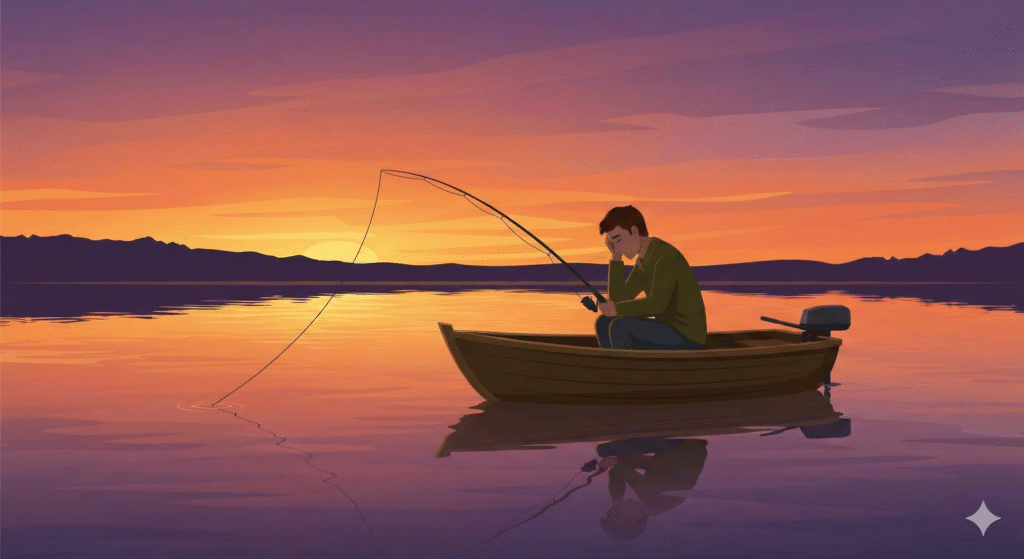
-
The Immaculate Confection
The Odd Couple: A Tale of Two Terriers
To understand the magnitude of this impending litter, you have to understand the parents. This is not a match made in a kennel club; this is a romance novel written by a drunk geneticist.
The Stud: Rocket
Rocket is a Theodore Roosevelt Rat Terrier. If you aren’t familiar with the breed, imagine a tank that has been lowered to the ground. He is the “Short King” of the operation. He has the legs of a badger, the chest of a bodybuilder, and the ego of a dictator. He walks through the house like he pays the mortgage.
The Queen: Bella
Then there is Bella. She is the “Type A” standard—the long-legged, athletic variety often referred to as the “Amish” or Decker strain. She is essentially a gazelle in a dog suit. She towers over Rocket. She is fast, sleek, and capable of jumping a six-foot fence without breaking stride.
Rocket, to put it delicately, had to bring a stepladder to the party. But he got the job done.
The Christmas Miracle
According to the calendar and the vet, Bella is due on Christmas Day.
While the rest of the world is unwrapping iPhones and pretending to like socks, I will be playing midwife to a litter of what scientists can only describe as “indestructible super-mutants.”
Think about the genetics here. You are combining the low-center-of-gravity torque of the Theodore Roosevelt with the high-speed suspension of the Type A Giant. These puppies aren’t just going to be pets; they are going to be tactical units. They will be able to jump onto the counter to steal a turkey and then tunnel under the fence to escape the crime scene in under 30 seconds.
But before the miracle of birth, there is the reality of pregnancy. And this brings us to the second, and arguably more important, topic of this manifesto.
The Cloud of Love
A pregnant Rat Terrier is a biological furnace. Bella is currently eating for five (or six, or god forbid, eight). Her metabolism is running hot. And the byproduct of this miracle is gas.
Silent. Deadly. Room-clearing gas.
And this leads to a universal truth that I have discovered after years of dating, dog ownership, and living the “Yankee Heath Cheese” lifestyle: Fart jokes are the gold standard of the human experience.
There is a lot of talk these days about “love languages.” People say their love language is “acts of service” or “quality time.”
Wrong. The only true love language is Humor. And the foundation of humor is the fart.
The Philosophy of the Poot
Hear me out. We live in a serious world. We have taxes, we have blizzards, we have political arguments. We have to be “professional” all day long.
But a fart? A fart is the great equalizer. It is the body’s way of reminding you that you are not a god; you are a biological machine that processes burritos.
If you are dating someone and they refuse to laugh at a fart, you are dating a spy. You are dating a robot. You are dating someone who takes themselves too seriously to survive a winter in Fergus Falls.
The “Fart Test” for True Love:
Love isn’t about looking perfect on Instagram. Love is sitting on the couch, watching a movie, when the dog (or let’s be honest, you) lets one rip that peels the paint off the walls.- The Wrong Reaction: Disgust, anger, or a lecture on manners.
- The Right Reaction: Uncontrollable laughter and rolling down the window.
That laughter is intimacy. It’s vulnerability. It’s saying, “I know you are gross, and I love you anyway.”
The Ultimate Holiday Gift
So, this Christmas, my house will be a chaotic symphony.
There will be Rocket, strutting around like he invented fatherhood. There will be Bella, exhausted and likely releasing chemical warfare while nursing a pile of squeaking, potato-shaped puppies.
And in the middle of it all, there will be laughter. Because that is what this life is actually about. It’s not about the perfect decorations or the silent, sterile house. It’s about the mess. It’s about the short dogs and the tall dogs. It’s about the smell of puppy breath and, yes, the occasional toot from the corner of the room.
If you can’t laugh at the chaos, and you can’t laugh at the gas, you’re missing the point.
Merry Christmas from the Kennel. Bring a clothespin.
-
The River Doesn’t Have a Manual
FERGUS FALLS, Minn. — They called it a “Vitality Factor” of 46. I call it being unable to sit still in a cold room.A recent comprehensive analysis of my psychological profile suggests I am a “Group I Integrative” personality. In the sterile language of corporate consulting, this means I am “restless and uneasy,” a man who “resists being physically confined”.In the language of Otter Tail County, it just means I’m Yankee Heath Cheese. And I don’t read the instructions.The report says I possess a “superior intuitive ability” and a “low tolerance for details”. That combination is dangerous in a cubicle, but out here, in the real world of wind, water, and wires, it is the only way to survive. I don’t wait for permission to “control my own destiny”. I build it.The River Doesn’t Have a ManualMy profile says I prioritize “independence of action”. You see this best when I’m waist-deep in the river. I don’t buy fishing rods off the rack. Buying a rod is admitting that a factory in China knows more about how I fish than I do.I build my own rods. I tie my own lures. When the “Factual Judgment” score hits a 7 out of 9, it means I rely on past experience to make “real time” decisions. I look at the water, I check the hatch, and I trust my gut. The fish don’t care about your spreadsheet. They care about presentation.Controlling the FrequencySince high school, I’ve been a drum and bass DJ. The analysis nailed this part: I crave “high visibility” and have “contagious enthusiasm”.When I’m behind the decks, I’m not just playing music. I’m exercising authority. The goal is “to lead others” through a sonic landscape. I don’t need to talk to every person on the dance floor—my “Empathic Judgment” is a 4, meaning I treat them how I want to be treated. I give them the beat I would want to hear. I control the energy. I set the pace.The Code and the WrenchIn the garage, or behind a monitor coding the next iteration of Falls Digital, the drive is the same: “Concrete results”.Whether I’m wrestling with the ABS sensors on a 2010 Toyota RAV4 or deploying a Docker container for a new web project, I am driven by a need to be a “causative force”. I fix the boat not because it’s cheaper, but because I need to know why it works. My “Comprehension Speed” is high. I absorb the new info, I synthesize it, and I make it run.The profile warns that my “goals dominate”. It’s true. When the check engine light comes on, or the PHP script fails, the rest of the world fades away until I win.The Home TeamThe report says I am a “Team Builder” who operates best when I “demonstrate importance” to others.I’m a single dad. I’m the guy checking in on my 93-year-old grandma. They are the team. I don’t run this unit with an iron fist; I run it with “persuasion” and “warmth”. I protect my own. The goal isn’t just to survive the winter; it’s to ensure the people who rely on me know that the Big Cheese has the situation handled.I might be “overly talkative”. I might “resist controls”. But in a world full of people waiting for an algorithm to tell them what to do, there’s something to be said for a man who trusts his gut, builds his own gear, and drives his own road.That’s not just a personality profile. That’s the Yankee way. Known locally as “Yankee Heath Cheese,” is a web developer, DJ, and outdoorsman based in Fergus Falls.
-
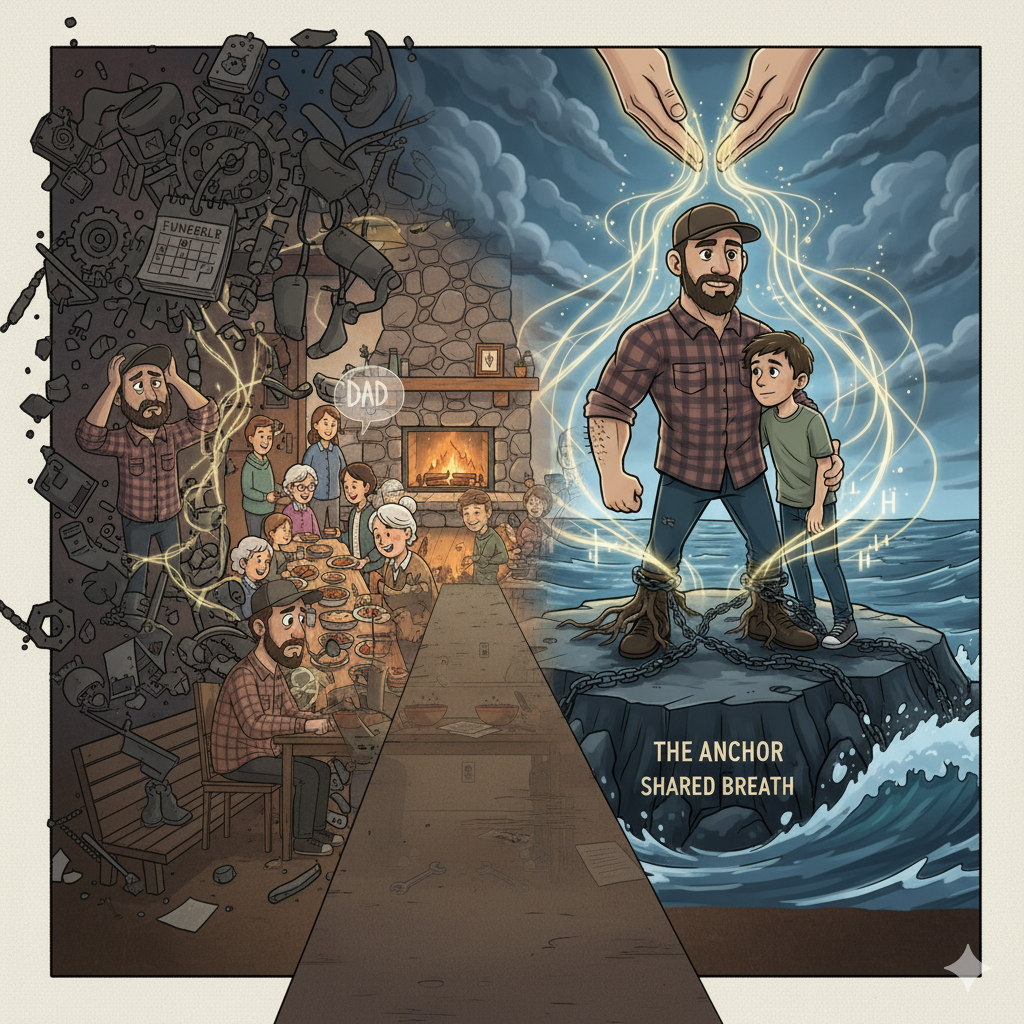
💔 The Kind of Betrayal That Breaks You
When “In Sickness” Means “Bail Out”
I have spent a great deal of time over the past decade keeping this story locked away. It is one of those deeply personal traumas that feels too ugly, too raw and too profoundly unfair to simply air out. Yet the weight of it, even 10 years later, is crushing, and it has become necessary to finally put it into words. This is not simply a story about a divorce. This is an examination of what happens when life throws an impossible mountain at a person, and the people who swore to stand with him decide that carrying a shovel is too much work. This is the story of abandonment when I was already sinking.
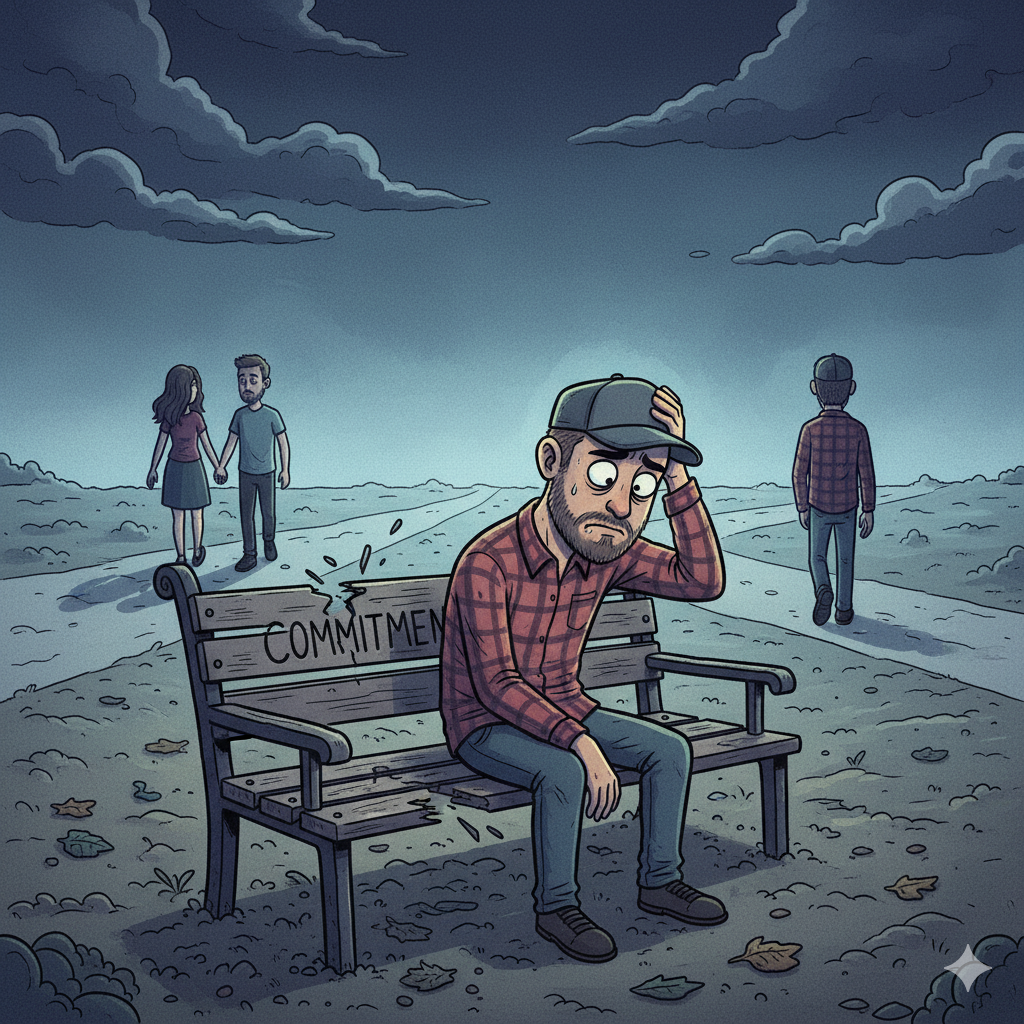
The Perfect Storm and The Collapse
Do you know what it feels like to finally crack? It was not a single event; it was a devastating cocktail of stressors that hit simultaneously. My grandfather died, adding a layer of grief and responsibility right when I was already dealing with a new, aggressive professional challenge, a new young daughter at home, and the seismic physical and mental shift of quitting a 20-year smoking habit. Then came the sickness: the diagnosis of a thyroid disease that fundamentally changed my health. My body and mind were under a sustained siege. I was stressed, sick and desperately scrambling to adjust. I needed support. I needed a partner. I needed family.
What I received instead was a clear path to the exit. The commitment “in sickness and in health” felt like a cruel joke. As I began to truly struggle, my ex-wife did not just leave; she fled. And her family, instead of offering a moment of compassion or encouraging assistance, rallied around her decision to abandon a man who was gravely sick and in need of care. This betrayal was not confined to a marriage. It spread like poison, destroying my core relationships. The ultimate devastation was discovering my ex-wife was dating my former best friend. A man I trusted, a man who saw me at my lowest, chose to capitalize on my collapse. That kind of profound betrayal warps a person’s view of human connection forever. My own brother disowned me, removing himself entirely when I needed a family member most.
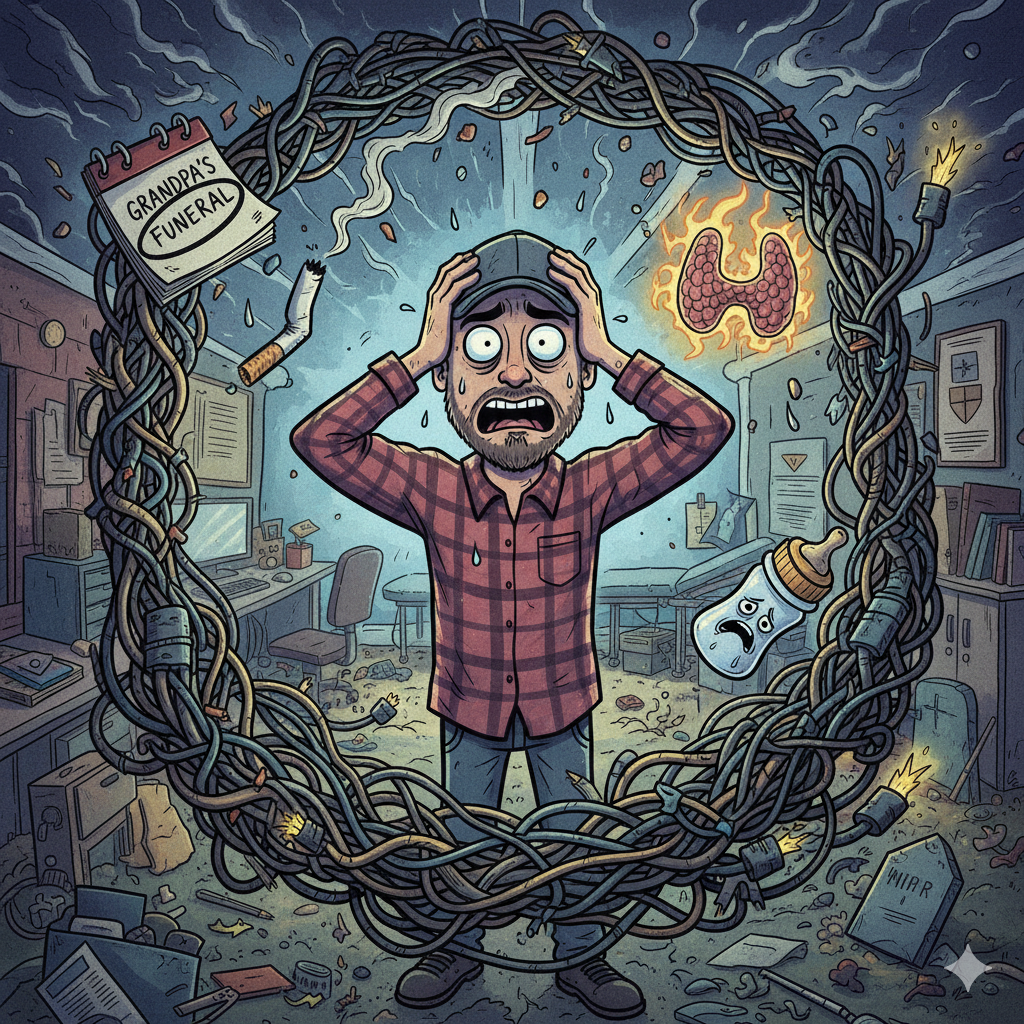
The Lingering Scar of Separation
The most unbearable and lasting injury is the alienation from my children, an ongoing trauma that defines my current reality. Ten years after the collapse, my oldest son has lived with me for approximately five years. The transfer was hairy and difficult, but it is done. Yet, hearing him not call me “Dad” is the quiet, lingering echo of that original family breakdown. He lives under my roof, but that fundamental, simple word remains unsaid. This is the real, daily consequence of the indifference shown by the family who left me.
Life together is far from easy. He and I have both had problems that brought us into contact with the police on a number of occasions. It is a constant struggle, marked by the complexities of deep emotional injury, inherited behavioral issues, and the stress of repeated conflicts with authority. We are both products of the destruction that occurred a decade ago. It is a reminder that the failure of family to anchor itself during crisis doesn’t just hurt the adults; it sets the next generation on a difficult course. The indifference shown by my ex-father-in-law, who was solely focused on taking back a possession—a boat—the moment the divorce papers were filed, acted without regard for my son’s well-being, and that legacy of neglect lives with us every day. I remember the day he was taken away, screaming, and how they simply let him scream. That sound is a scar, and it is a scar we are both carrying now. True family is revealed in the struggle.
⚓️ What Family Really Is: The Anchor of Shared Breath
The pain of abandonment strips away all the romanticized notions of kinship and reveals the absolute truth of what family must be. It is not defined by biology or a legal document; it is defined by anchorage when the sea is rough. I am, by nature, a hard lover and an intelligent person. I approach the world with a deep, clear-eyed empathy, recognizing the complexity and pain in others. This capacity to put myself in another person’s shoes—to know what it means to be broken—is precisely why the betrayal cut so deep.
In Minnesota, we understand that connection is not just a suggestion; it is the rhythm of life. It is rooted in the shared experience of the harsh winters and the intentional commitment to showing up for one another. Family is the potluck principle. When one person is too exhausted or sick to cook, others bring the food. They do not merely ask if you need help; they show up with a hot dish and a warm blanket. This is the bedrock of community: shared load, shared nourishment, no questions asked. It is the moment after the church service, over coffee and conversation, where we slow down and actually see each other. It is the intentional gathering during the holidays, recognizing that the light shines brightest when we huddle together. The church is family, and family is in the home. The home, whether physical or spiritual, is where the vital work—the making of love, support and acceptance—takes place.
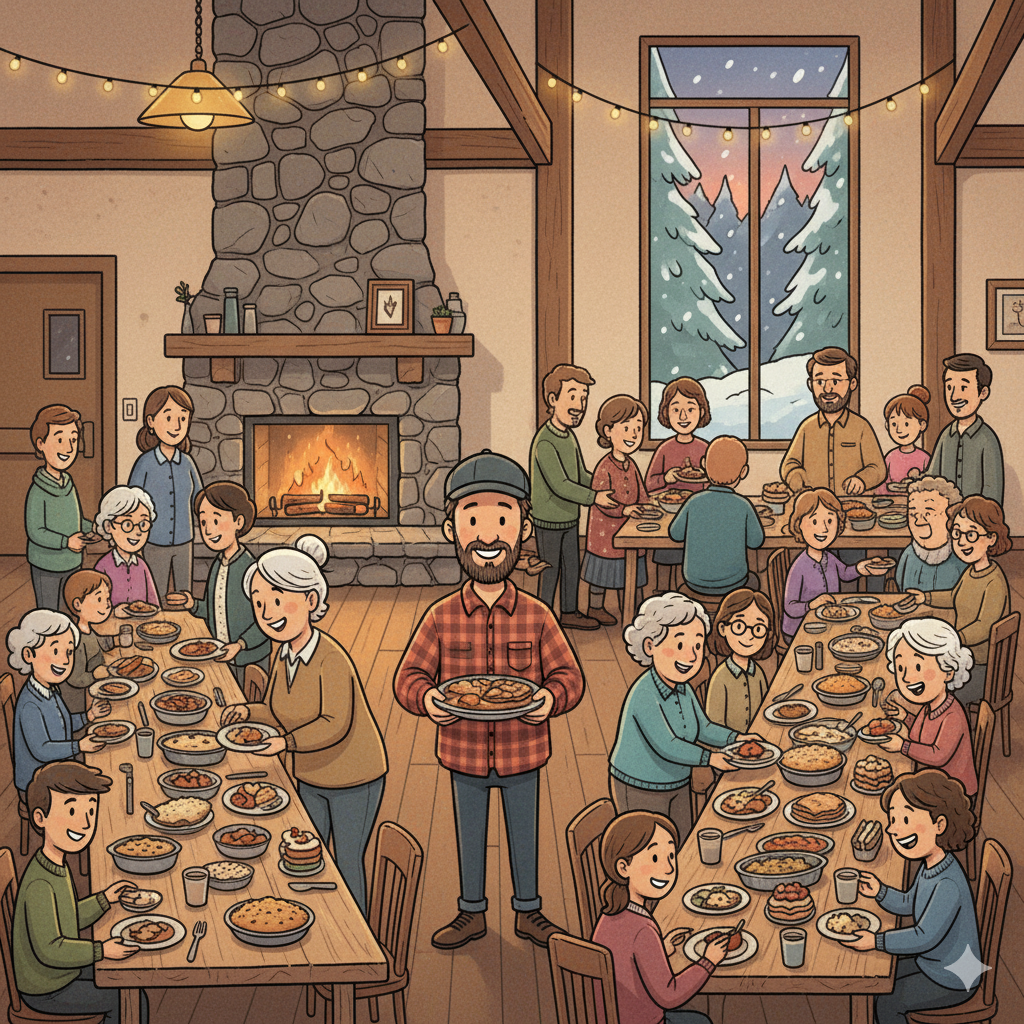
This brings us to the most essential truth, the ancient wisdom that transcends geography: We all share breaths. This is the core concept of Māori philosophy, where the traditional greeting, the Hongi, involves pressing noses and foreheads to share the Hā, the very breath of life. To share breath means to understand that when one person struggles, their breath is shallow, their life force diminished. The true measure of family is how you respond to that.
Family does not bail. When someone is sick, confused or “out of sorts,” family does not run for the hills. They do not view a temporary illness or a period of mental strain as a reason to terminate the covenant. They recognize the shared vulnerability of the human condition. A hard lover does not just offer sympathy; he offers solutions. He helps you find the doctor, drives you to the appointments and sits with you in the quiet moments of despair. True family embodies the belief that the home, the relationship, is where love is made through difficult, persistent effort. Betrayal is the act of denying that shared breath, of deciding that one person’s oxygen is too valuable to share with the struggling person next to them. The lesson burned into me is this: Family is the people who stand with you in the crucible. They are the ones who reflect your own intelligence and empathy back at you, acknowledging that we are all just a moment away from needing the same grace. They are your anchor. They are your shared breath.
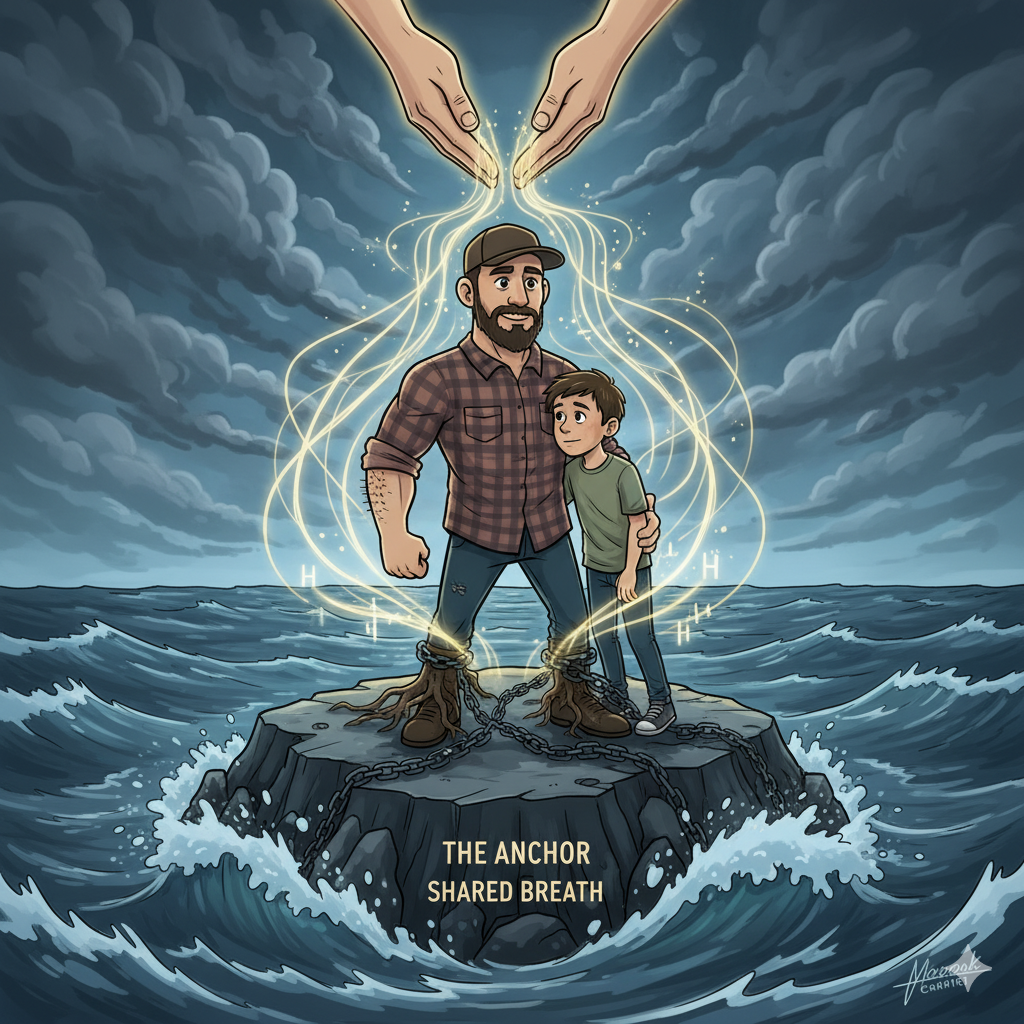
-
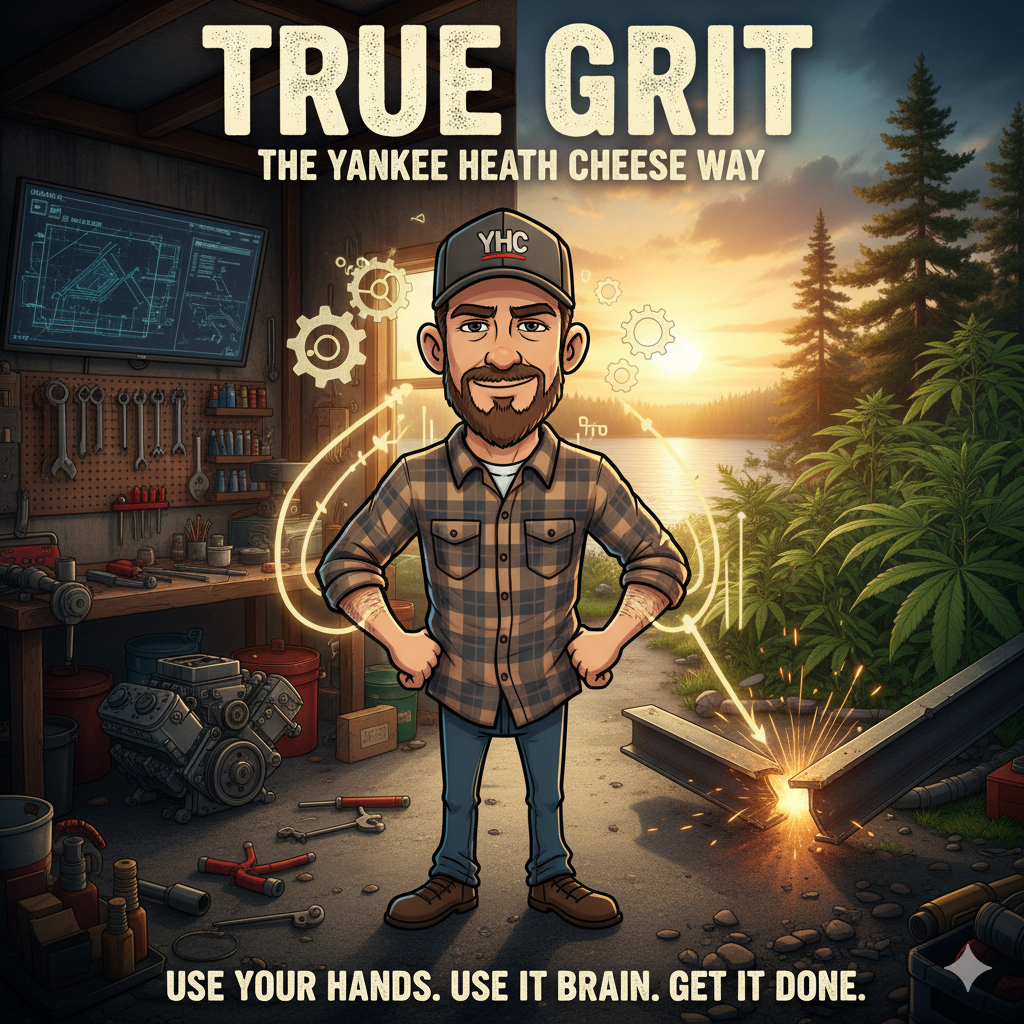
True Grit and the Art of Getting It Done

The Gospel According to Yankee Heath Cheese
Listen up, because what I’m about to lay out isn’t just about a couple of days on the calendar; it’s a blueprint. It’s the very essence of what it means to be American, to live by a code of self-reliance, ingenuity, and a pure, unadulterated “get it done” attitude. It’s the gospel according to Yankee Heath Cheese, and it’s called True Grit.
The world, these days, it’s always trying to sell you a solution. Pay someone. Buy new. Call a professional. That’s for the soft hands, the folks who’ve forgotten the satisfaction of making something work with your own two hands, your own two brain cells, and a healthy dose of stubbornness. True Grit isn’t found on a credit card; it’s forged in the frustration of a broken thing, the challenge of an impossible task, and the sheer will to stare it down and say, “Not today, problem. Not today.”
Take this past weekend. A perfect microcosm of the Yankee Heath Cheese existence. Saturday was supposed to be a regular chore: putting away the 17-and-a-half-foot fiberglass ski boat. Sounds simple enough, right? Except the trailer was totaled. Bent nearly in half from some previous unseen catastrophe. Most people would call it a write-off. They’d pay five grand for a new trailer, then another grand to have some shop transfer the boat. Not me.
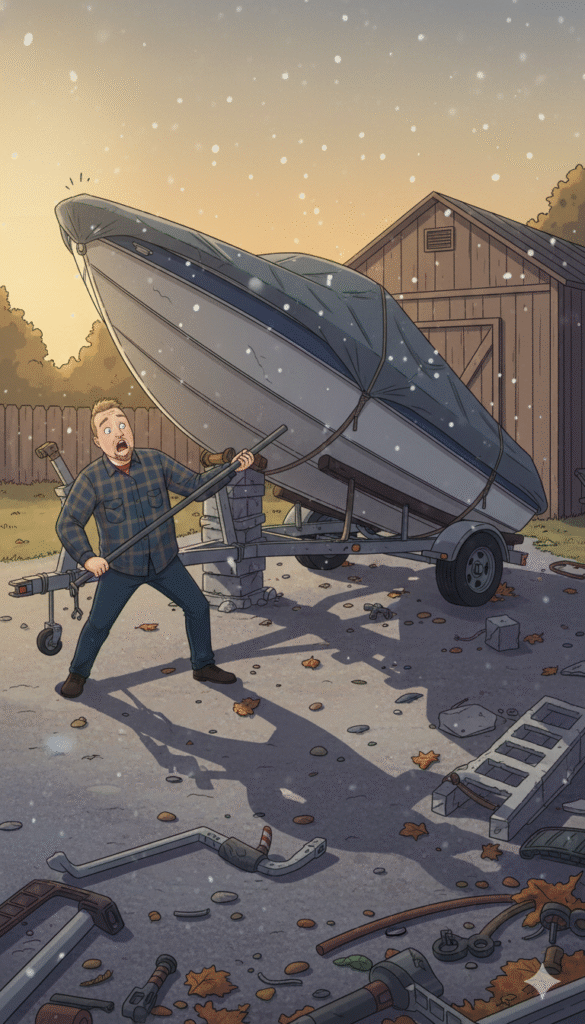
No, True Grit kicks in when you’re looking at that scenario, and your brain starts firing not with despair, but with questions: How can I lift it? What can I brace it with? Where’s the leverage? That boat, mind you, is a beast. But with a strategic arrangement of cinder blocks, a trusty car jack, and pure brute force, I began the dance. Inch by agonizing inch, the boat went up, the mangled old trailer slid out. And yeah, there was a moment – a heart-stopping, stomach-dropping moment – when she went cattywampus. Teetering. Listing. A near disaster. Most would panic. But True Grit is about calm in the chaos. It’s about assessing the immediate threat, finding the new center, and painstakingly, painstakingly righting the ship. Literally. That wasn’t just physical labor; that was a masterclass in improvisational engineering, relying solely on my own existence to prevent a total loss.

And the new trailer? Money was tight, naturally. Being poor but crafty isn’t a badge of shame; it’s a source of pride. Found a decent used trailer, but instead of cash, I brokered a trade: some of my prime yard-grown cannabis. A cost-neutral exchange, fueled by self-sufficiency. That’s ingenuity. That’s seeing value where others see only expense. That’s American resourcefulness, pure and unadulterated. That boat now sits proudly on its new cradle, ready for the thousand-plus lakes of Otter Tail County next summer, a testament to what you can achieve when you refuse to be defeated by circumstance.

Then came Sunday. Woke up, ready for church, only to find the garage door completely busted. Again, the easy route would be a costly service call. But True Grit says: figure it out. After a walk with the dogs by Pebble Lake to clear the head and a plate of chili cheese dogs to fuel the body, I delved into the repair. Fabricating parts from scrap sheet metal, using self-tapping screws – it was ugly, it took time, it took thought, but it worked. It’s the satisfaction of knowing you prolonged the life of something, you kept your shelter secure, all with what you had at hand.
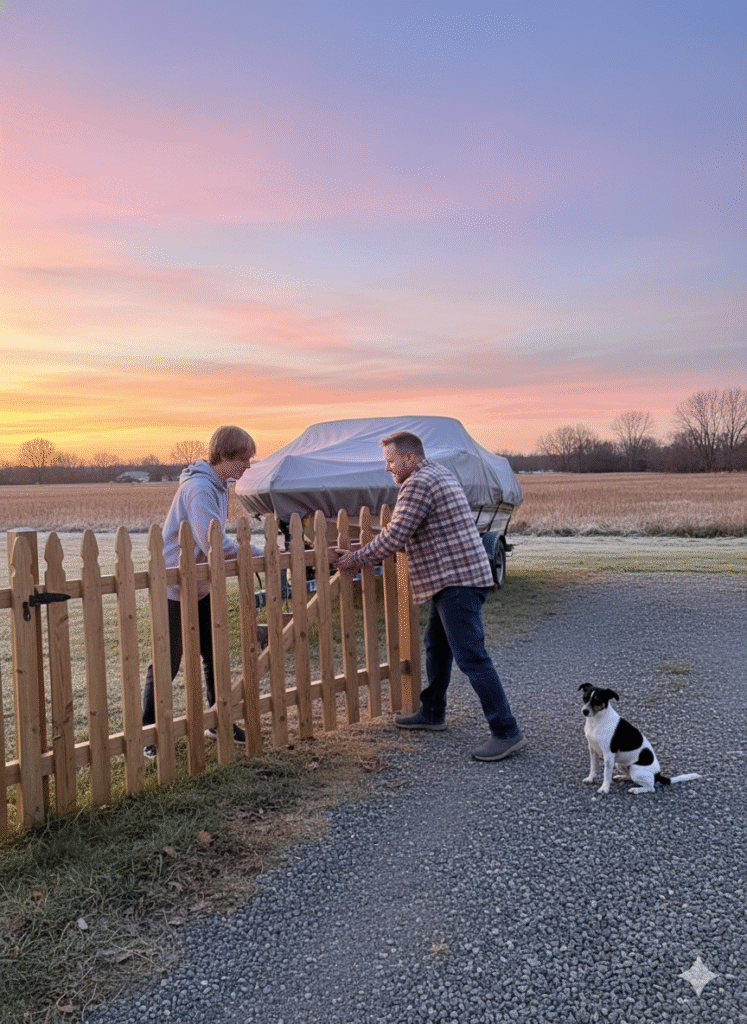
Later, my son and I were out taking down the fence, getting the other boats tucked away because “in-town” rules demand it. Even with help, it’s a grind. But it gets done. And when the peace finally settled, under the dim light, the towering 10-foot cannabis plant from the yard called. That’s a giant, a testament to patient cultivation. Chopping it down, breaking it into branches for processing – another big task, another symbol of self-reliance, of providing for your own, on your own terms.

This is what it means to be Yankee Heath Cheese. It’s about using your hands, using your brain. It’s about an unwavering belief in your own ability to overcome, to adapt, to create solutions where others see only problems. It’s about the raw, beautiful truth of being an American who truly relies on his own existence, who finds strength in his resourcefulness, and who, no matter the challenge, always, always gets it done. That’s True Grit. That’s living.
